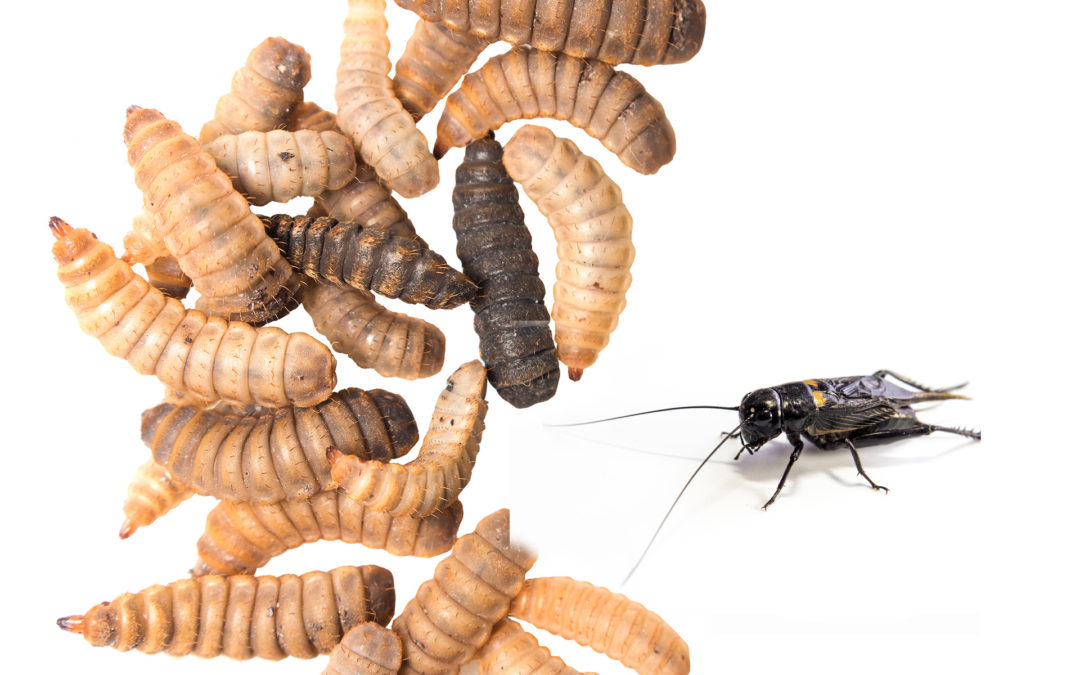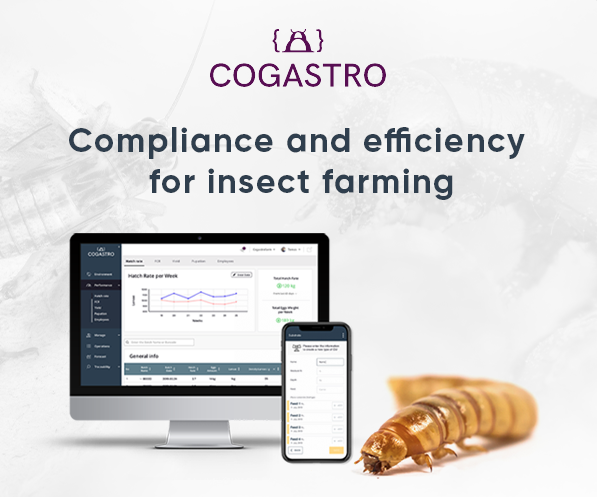I love crickets, I really do. They were my gateway bug, and I still consume a couple hundred grams of dried, powder, or freshly cooked on the daily. Because they’re not commoditized though, it’s mostly in powder form, which I help produce along with Khmer and foreign partners for Changrit Kamleang in Phnom Penh. Fresh of course also weigh 4x more.
But it’s become quite clear the past 6 months since I started eating black soldier fly larvae on a regular basis, thanks to the addictive human-grade BSFL I’ve been getting from Unique Biotech in Malaysia, that the insects as food market is going to change in a big way from what it is today.
I’ve always looked at the insects as food sector like boutique coffee. I won’t go into details, reverse engineer that statement if you want, but that’s how I’ve been approaching it.
What I will say clearly is that some commoditization needs to happen soon in the insect foods market if it’s ever going to be viable on a large scale for even the early adopters, let alone the mainstream.
PRICE MATTERS
One major hurdle in the way of that happening, is that crickets are simply not cost effective. There are reasons beyond everyone always being “sold out”, that supply is difficult to come by.
They’re healthier than whey, of course. And crickets are certainly one of the most sustainable natural alternative proteins available at scale today. But “scale” is still relative. And the price point is, well…it’s not sustainable. And it doesn’t seem to be improving.
In order to reach relevant commercial scale, the price of crickets needs to come down considerably. Which isn’t likely anytime soon, whether from an industrial cricket factory or from a co-op of a hundred rural smallhold cricket farmers.
Crickets are expensive. In part because in order to turn them into delicious snacks or healthy powder, there’s a ~70-75% net weight loss, along with the associated production costs to get it to that form.
But there’s always a market for premium products, especially when they’re unquestionably healthy and have a beautiful sustainability story. And perhaps the commoditization of crickets will take a different journey altogether, and become a staple frozen food, like its cousin the shrimp.
Could fresh crickets find their way into the frozen foods aisle of major supermarkets? Will grilled crickets or sautéed crickets or garlic stir-fried crickets become a popular western dish, as they are in SE Asia?
It’s certainly possible, but there are regulatory hurdles which need to be navigated to reach the point where it’d be feasible for cricket farmers and processors to take that approach. However, I’ve heard reports recently that you can find frozen crickets at some of the largest supermarket chains in Europe now. That’s encouraging news.
So I believe in the future of crickets as food – I just don’t see them scaling nearly as quickly as the two current top competitors, mealworms and BSFL. There’s the potential outlier in fruit fly larvae as well, now that Flying Spark has received investment from Thai Union.
Realistically, though, crickets are unlikely to be commoditized in the short term as quickly as mealworms and BSFL, for one simple reason: price.
Historically, black soldier fly larvae have been reported on and talked about as animal feed, or pet food – but not food for human consumption. I’ve eaten a lot of BSFL over the past several years, with taste ranging from “not going back for seconds” to “sorry I ate the whole bag”.
In the back of my mind, though, and in conversations with all of those producers, the “food waste” issue was ever-present. Both for taste and bacterial concerns, that’s just not something that will work for people, and regulators would never approve it anyway.

Coconut milk, Khmer palm sugar, toasted black soldier fly larvae fed on clean agrowaste
But with more and more BSF producers using clean agrowaste, at least in SE Asia, suddenly the conversation is shifting. It’s not only possible that BSF grubs could be human food – it’s absolutely going to happen.
The larvae have an incredible nutritional profile, with protein approaching that of crickets (more on this in a future post). They’re high in fiber, calcium, and omega 3’s.
Most importantly, roasted black soldier fly grubs taste amazing, with a slightly salty and umami flavor straight out of the oven or microwave dryer! No seasoning necessary, and they work in a variety of dishes. I’ve used them for a puffed-cereal texture along with job’s tears and coconut milk, or as crunchy croutons in salad, and they even maintain their crispness mixed into hot foods like fried rice.
The bottom line, though, in terms of commoditization, is price. BSFL are exponentially cheaper to farm, process, and utilize as a food ingredient or consumer product than are crickets. Scaling to an industrial level is also much simpler.
HOW THIS WILL IMPACT INSECT FOOD PRODUCTS
I think we’ll see major changes the next year or two across the insects as food space, with more products utilizing BSFL as a base powder ingredient rather than crickets. (Mealworms and fruit fly larvae could also compete in that mix, but there are significantly fewer producers – at scale – for those insects.)
If I’m an early adopter in search of a sustainable, nutritious, natural protein bar, for example, why would I pay 3x more for a cricket bar with lower protein content than a BSFL bar with protein content that rivals one based on whey?
BSFL are equally as sustainable and equally as nutritious to crickets. As a commoditized food ingredient, then, because of the significantly lower price point, it makes more sense to both use (producers) and buy (consumers) BSFL rather than cricket.
Now, with that said, before the world’s cricket food producers get angry with me (just remember, I’m one too!), the market for crickets isn’t going away. I just foresee it shifting away from powder, and toward higher-end premium products for dried, and the frozen foods section for fresh.
Regulation at the moment isn’t helping growth in any vertical, especially given the latest news out of the EU with regards to which companies can export to Europe (beginning in December, only Switzerland, Canada, and South Korea will be legalized, according to a recent report by IPIFF), and the ongoing uncertainty surrounding the novel foods dossier.
But regulators gonna regulate, regardless. Ultimately, the market is going to dictate which insects get used where. And based on the growing trend I’m seeing with BSFL producers to use clean agrowaste to feed their larvae (at least in SE Asia), coupled with the genetic selection advances in being able to customize the nutritional content of the larvae, BSFL is crawling out into the lead as the insect most likely to become a commodity.
It’s going to take some time for the shift to happen, of course. I’ve been chowing down on grubs consistently since around May of this year, and because I like them so much (there’s that flavor component again) it’s led me to dig deeper into the supply chain.
2020 is likely to be a big year for black soldier fly larvae as human food. Along with creating a new entomo beauty category with entomocosmetics! 🙂
RE-FRAMING THE CRICKET STORY
As for crickets, while this all might seem like some bad news for our beloved six-legged little protein nuggets, I’m optimistic the market will continue to grow. It’s important to be realistic though – crickets will probably never compete with BSFL on price.
But I don’t see larvae competing with crickets as a fresh-cooked food, either. At least not until the massive shift takes place culturally, you know the one we’re always talking about in comparisons with lobster and sushi.
By then we’ll probably have dozens of different insect species competing for shelf and freezer space though – so that’s a conversation for a future day.
For now, I’m looking at how crickets can be positioned as a premium product. Not to commoditize them and focus efforts on lowering the price (obviously that’s a constant logistical undertaking within the business, I’m simply talking about the overall big-picture of “crickets as food”). Rather, to JUSTIFY the premium price point.
While it may be an unpopular opinion, I think starting in 2020 this will begin to play out in the insects as food industry:
- BSFL = commodity food ingredient, and potential for a more mainstream price-competitive dried snack
- Crickets = premium boutique snacks and superfood powder mixes, with a shift toward fresh (frozen) product
What do you think about which insects will be commoditized? Am I totally crazy or speaking facts? Send a message or leave a comment, let’s hear it!







